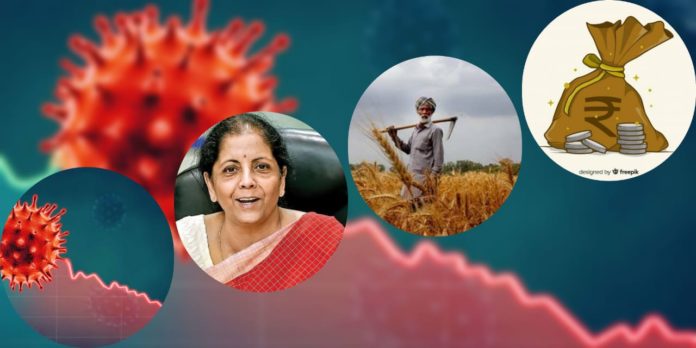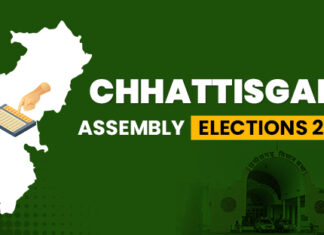It is hard to think of another crisis in recent memory that so thoroughly exposes multiple vulnerabilities of our society and economy and that is so sadly predictable in its outcomes. The economic hardship imposed by the COVD19 lockdown has been borne unequally along expected lines – lower caste, working-class, informal, female, migrant – these are the groups paying with their savings, their mental and physical well-being, and ultimately with their lives. Where a majority of workers, self-employed as well as casual, earn their incomes daily, a stoppage of economic activity instantly destroys employment as well as earnings. This is further compounded by the uneven nature of economic growth, which has created a large divide between the rich and the poor states, which manifests as migration flows of millions of workers over thousands of kilometers every year. The same uneven growth process has created employment opportunities in Tier 1 and Tier 2 cities much faster than the smaller towns and villages, resulting in dense populations of the urban poor. These structural characteristics of the Indian economy and decades of underinvestment in public goods have combined with the sudden and severe lockdown to generate widespread misery.
The 20 lakh crore stimulus package is mainly a monetary stimulus, not a fiscal one. This means that the majority of 20 lakh crores will be available in the form of loans to businesses, not direct spending by the government.
Beyond the economic features of the crisis, two more disturbing aspects need to be noted. First, the poisoning of communal relations has destroyed solidarity and compassion when they are needed most. And we turn on each other exactly when we should be holding hands. Second, the concentration and centralisation of political power that we have come to accept in this country enable a few men (gender intended) to sit in a room and decide the economic fate of millions. Kings and emperors of older days can only dream of such absolute power.
The Union government has so far announced two COVID19 response measures; the initial 1.7 lakh crore package announced in late March, as well as the more comprehensive 20 lakh crore stimulus package, announced earlier this month. The initial package, even adding the state-level measures to it (bringing it up to 2 lakh crores), was very inadequate to meet the crisis. In addition to food relief, the announced cash relief at Union and State level amounted to hardly 2 to 3 thousand rupees per household. Even that has not been received by a large fraction of vulnerable households. By contrast, surveys show that the vast majority of households have lost almost their entire income for at least two months. In urban India, the self-employed, the SMEs, the casual and home-based workers, all lost their earnings. In rural India, farmers have been having difficulty harvesting crops, transporting to mandis, etc. The announced cash relief thus falls far short of what is needed to prevent people from depleting their savings, going into debt, and ultimately, starving and dying.
The new 20 lakh crore stimulus package is multi-dimensional, containing everything from additional MGNREGA spending to privatisation of PSUs and space travel. It does have many interesting provisions, such as a 1 lakh crore fund for Farmer Producer Organisations to invest in local storage and value-addition, as well as cheaper loans for MSMEs. But it is mainly a monetary stimulus, not a fiscal one. This means that the majority of 20 lakh crores will be available in the form of loans to businesses, not direct spending by the government. This type of stimulus may be welcomed by fiscal conservatives who dislike any expansion of the public debt, but it is not the right kind of stimulus for these times.
We should remember that even before the lockdown, the Indian economy was in a slowdown phase and private investment was weak, joblessness was high. On top of that the lockdown has resulted in a severe demand shock, the vast majority has little or no money to spend. In such a situation, businesses are unlikely to borrow, banks are unlikely to lend. So monetary measures will be ineffective. The need of the hour is for the Union government to spend directly to revive demand, and to share a greater share of revenues with the state governments for the same purpose. What should the spending be on?
Many good proposals have already been published in the past few weeks. I will not repeat them here. Instead, I outline four broad areas below that can serve as immediately actionable points that also have a long-term vision behind them.
1. National Employment Guarantee to rebuild and revive the economy – MGNREGA
needs to be strengthened and extended in its scope. And its urban version is urgently needed. This is not merely payment to the unemployed. Rather it is money spent in securing our ecological future and creating public goods without which we will, quite simply, perish, with future crises to come.
2. Universal Basic Services: We must build our public resilience. Our lack of basic health infrastructure forced us to impose a harsh lockdown (for fear of overwhelming our hospitals). The cure has turned worse than the disease. Meanwhile, what is now being experienced by the majority is often a lot of the vulnerable – always one disease away from economic ruin. The way forward goes through another immediately actionable policy -Universal Basic Services. Not insurance, but rather direct or indirect provisioning of health, education, housing, and other services publicly.
3. Let a Thousand Cities Bloom: The crisis is an opportunity to put the resources needed into our small towns to revive the local private economy. Distributed (and not merely decentralised) economies are robust economies. We can imagine an India that has a thousand dynamic towns, instead of ten or fifteen pampered and unlivable cities. These towns already exist, with their histories, their artisanal traditions and their business cultures. But they are starved of the resources they need. Such distributed urbanisation is the only reasonable way a large rural country like India can urbanise.
4. Towards Prosperous Villages – For too long we have forced people to choose between living with their communities and families or earning a decent living. The COVID-19 crisis has exposed the vulnerability of this model. Reviving the village economy must rise to the top of our agenda. The policy ideas are ready and waiting – sustainable farming, remunerative prices, local storage and value-addition, small-scale industry – to be conceptualised into a whole that will complement the urban economy instead of being at war with it.
All the above policies need public resources at the national, state, and local level. We are talking of spending that may amount to 10% of India’s GDP (20 lakh crores), but it is actually spending instead of easier loans, a fiscal stimulus instead of a monetary one. Raising the resources for such action will require multiple avenues. Part of the money can be raised from taxes on top incomes and wealth, a part from borrowing, and part from direct printing of money. Inflation need not be feared if the money is well-spent in generating assets and improving productivity via investments in health, education, housing, transportation, and other public goods. An unprecedented crisis calls for a bold action with a long-term vision. Let us now waste this opportunity to transform India into an inclusive, just, sustainable, and vibrant society.
























[…] ಅವರ ಏಕಪಕ್ಷಿಯ ನಿರ್ಧಾರಗಳಿಂದ ದೇಶದ ಆರ್ಥಿಕತೆ, ಸಾಮಾಜಿಕ ಪರಿಸ್ಥಿತಿ ಎಲ್ಲವೂ ಪಾತಾಳ […]